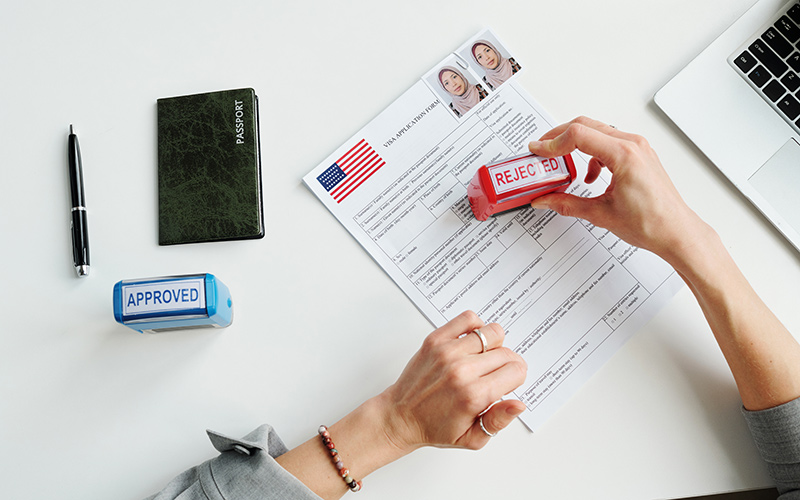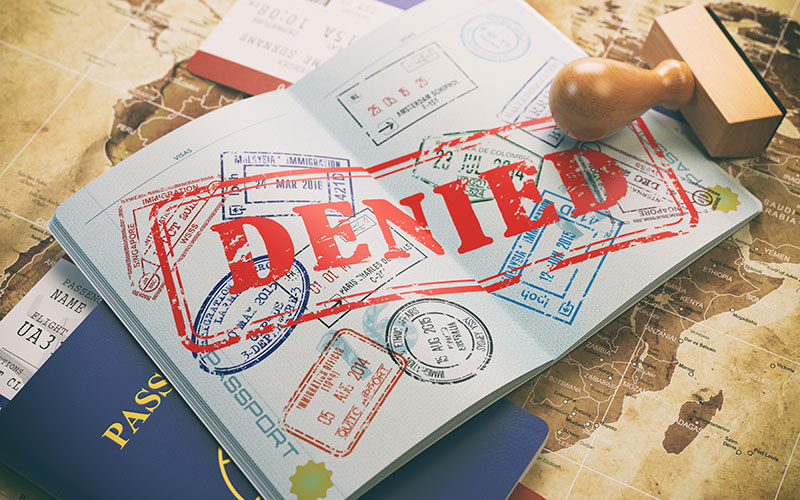
For so many people around the world, applying for a U.S. visa can be an overwhelming ordeal. Most future visa applicants are keen to know how likely their applications are going to be successful, especially with respect to rejections from certain nationality groups. Using the latest available data of US visa rejection rate by country all the way until 2025, this holistic analysis looks into the trends and insights.
Understanding U.S. Visa Rejection Rates

So how do the USA Visa Rejection rates vary? They can vary widely by country based on factors like the economy, political relations and possible overstays by the applicant. Visa numbers as well as US visa Refusal rates are released by the U.S. Department of State each year, so the public can see statistics around those numbers, among other things.
Global Overview of Visa Rejection Rates in 2025
Compared to other countries, US visa rejection rate in 2025 had significant disparities. While some countries enjoyed exceptionally low rejection rates, indicative of strong diplomatic relations and strong economic conditions; others faced much higher rates due to a variety of factors.
Low Rejection Rates (0-10%)
Low US visa rejection rates correlate with particular characteristics of those countries, including stable economies, low incidences of visa violations by nationals, and strong diplomatic relationships with the United States. These countries fell into that category in 2025:
Israel (3.30%): A historically strong bilateral relations with the U.S. and high compliance rate among the citizens lead to the low rejection rate for Israel.
United Arab Emirates (4.18%): Dubai’s investments and strategic ties with the U.S. contribute to its notably low US visa rejection rate for Dubai 2025.
Saudi Arabia (5.01%): With its relative economic stability and considerable business connections to the U.S., Saudi Arabia enjoys favorable visa approval rates.
Japan (6.05%): Very good diplomatic relations and low overstay rates on the part of its citizens have meant a low rate of rejection.
Czechia (8.05%): A member of the European Union with stable economic conditions, Czechia has a fairly low rate of visa rejection.
Argentina (8.21%): Argentina’s improving economy and stronger relations with the United States have made its rejection rate quite low.
France (10.11%): France holds an important relationship with the U.S., and its citizens have always respected visa norms which reflects low rejection rates.
Mexico (10.57%): Mexico is currently facing some of its biggest challenges, but strong economic cooperation with the United States has kept its visa rejection rate relatively low.
Italy (10.62%): Tourism exchanges with the U.S. and a fairly stable economy help keep the rejection rate low.
Denmark (10.66%): The Danish maintain a high standard of living and strong bilateral relations with the U.S., lending to their low visa rejection rate.
Germany (10.84%): Germany has a strong economy and extensive business relations with the United States, which has a low visa denial rate.
Indonesia (10.95%): Indonesia has the most improved economic growth with the U.S. and it shows in their visa statistics.
India (10.99%): The growing number of qualified applicants and the U.S. strategic partnership with India has led to a low rejection rate.
Moderate Rejection Rates (10-20%)
The moderately rejecting countries often have some challenges that influence their visa approval statistics. Moderate rates of refusal were seen on a country-by-country basis in these countries in 2025:
Brazil (11.94%): Brazil’s rejection rate remains moderate due to economic fluctuations and concerns about visa overstays.
Vatican (14.29%): Only a few candidates apply from the Vatican, so rejection rates can sometimes have statistical quirks.
South Korea (14.44%): The South Korean government maintains strong bonds with the U.S., but some visas have been under higher scrutiny, contributing to the overall rejection rate.
United Kingdom (14.69%): Despite the close connection, some visa categories and individual applicant variables have led to a relatively moderate rejection rate for the UK.
Spain (15.66%): Spain’s visa refusal rate has also been affected by economic and applicant-specific factors.
Australia (16.75%): Australia as a country is generally low on refusals, but some visas have been affected by an increase in refusals, adding to Australia’s overall rejection rate.
Norway (17.96%): There are some applicant and visa categories related factors which leads to moderate rejection rate in Norway.
Higher Rejection Rates (20-30%)
Countries facing economic or political struggles tend to have a higher rejection rate, with visa applications subjected to additional scrutiny. Countries with higher rejection rates in 2025 included:
Ireland (19.41%): The rejection rate for Ireland is driven by economic reasons and fear of visa extension.
Turkey (20.59%): There’s also greater scrutiny of Turkish visa applicants as a result of the political instability and security concerns facing the country.
Sweden (20.68%): On balance is stable, but certain visa categories are subject to heightened rejection rates in Sweden.
Finland (22.82%): It has a similar issue with their visa rejection rate, which is due to economic factors as well as individual problems associated with the applicant.
Egypt (26.11%): Political and economic pressures in the country have created a higher rate of visa rejection.
China (26.63%): It may maintain strong economic connection, however, concerns on visa compliance increased the rejection rate.
Significant Rejection Rates (30-50%)
Countries with high refusal rates for U.S. visas may have economic woes, political turmoil or security concerns that prompt closer scrutiny of applicants. Among the countries with a significant share of rejections in 2025 were:
Nigeria (29.23%): Nigeria is seen as an economically unstable nation where there are fears that those granted visas will overstay.
Ukraine (34.29%): Rising political turmoil and security concerns mean prospective Ukrainian applicants are facing closer scrutiny.
Iraq (37.09%): Iraqi nationals face a notable visa rejection rate due to security issues and instability on a political level.
Russia (39.49%): The high rejection rate for Russia is largely due to geopolitical tensions and fears of visa non-compliance.
Pakistan (40.82% Most Denied): Pakistani visa applications have been subject to increased scrutiny due to economic challenges and security concerns.
Afghanistan (48.73%): Ongoing conflict and security issues have caused a high visa rejection rate for Afghan applicants.
High Rejection Rates (50% and Above)
Countries with extraordinarily high U.S. visa rejection rates are usually mired in significant political, economic or security problems that result in close scrutiny for applicants. In 2025, rejection rates were notably high in the following countries:
Canada (52.04%): High rejection rate in 2025 is mainly due to stricter policies, increased scrutiny, and insufficient financial or travel documentation.
Iran (53.26%): Iranian nationals experience a high visa rejection rate due to political and security tensions.
Liberia (78.19%): Foreign economic instability as well as fears of visa non-compliance have driven a very high rejection rate for Liberia.
North Korea (100%): Because there are no diplomatic relations and the potential for security threats, all visa applications from North Korea are invariably refused due to also not meeting the U.S. Visa Requirements.
Factors Influencing Visa Rejection Rates
There are a number of factors at play in How to avoid US visa rejection:
Economic Considerations: Applicants from countries with unfavorable economic conditions may experience higher rejection rates.
US–Home Country Political Relations: Approval of the visa can be impacted significantly by the US home country relations. When the relations are tense or strained; they are under increased scrutiny and have a higher rejection rate.
Security Risks: Applicants from countries with significant security concerns or terrorism links could face increased rejection rates as they undergo stricter vetting processes.
Visa Overstay Rates: Historical overstay data that show certain countries have nationals that overstay can result in visa denials for prospective new applicants from that country.
Conclusion
For this reason, understanding U.S. visa rejection rates, and the factors driving this is important information for applicants from across the globe. Preparation, transparency, adherence to guidelines form the foundation for a successful visa application process.
